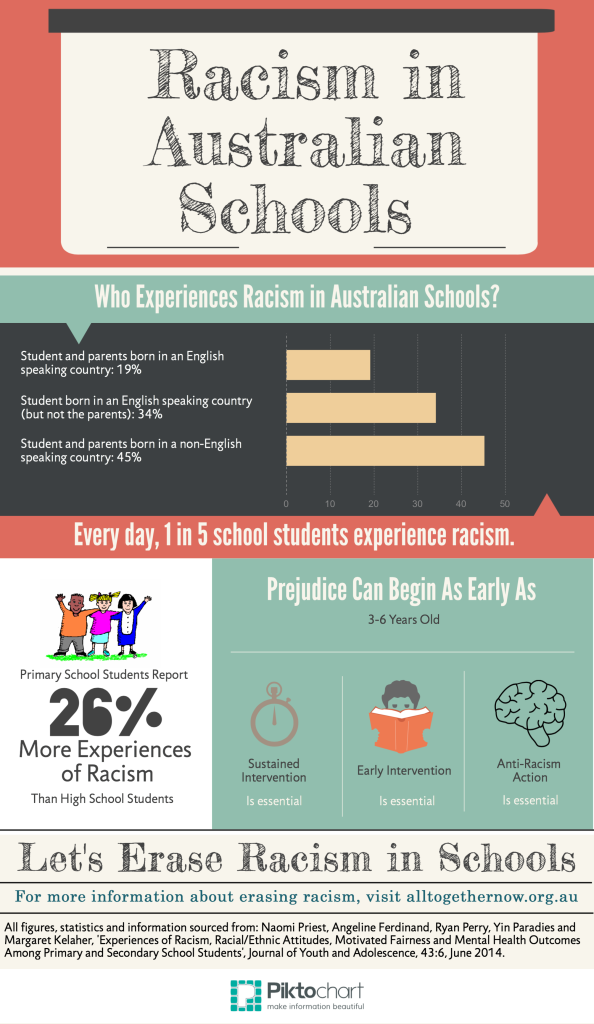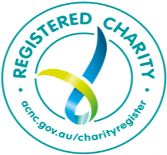What can I do?
If you have experienced or witnessed racial discrimination in or from an educational institution, there are a variety of ways to report it.
Make a complaint directly to the school, university or educational institution
All educational institutions must comply with federal and relevant state or territory anti-discrimination acts. Public schools are also bound by the directives of the state or territory government they are in, which should be available at the relevant Department of Education website. In addition, most educational institutions, private or public, have their own rules and policies in place to deal with racial discrimination, harassment and bullying as well as complaint mechanisms to report breaches of such rules and policies. These documents might be available on the institution’s website or upon request to staff members. If a discriminatory act has been done in breach of such rules, you can follow the existing complaint mechanism to report this breach. If no such mechanism is in place, you can set up a meeting with the school principal, dean or other person responsible for the institution to discuss what happened and possible solutions for the problem as well as measures to prevent further discrimination.
Make a complaint to a supervisory body
Schools
If you experienced or witnessed racial discrimination in school and the school did not provide a satisfactory solution to the problem, you can make a complaint to a supervisory body. The relevant body will vary depending on the state or territory and the type of school involved.
For private schools:
- You can make a complaint to the school’s Regional Director.
- You can make a complaint to the board of governors or to the Catholic Education Commission (if it is a Catholic school)
For public schools:
- You can make a complaint to the school’s Regional Director.
- ACT: you can make a complaint to the ACT Department of Education and Training
- NSW: you can make a complaint to the NSW Department of Education and Communities
- NT: you can make a complaint to the Northern Territory Department of Education and Training
- QLD: you can make a complaint to the Queensland Department of Education, Training and Employment
- SA: you can make a complaint to the South Australian Department for Education and Child Development
- VIC: you can make a complaint to the Victorian Department of Education and Early Childhood Development
- TAS: you can make a complaint to the Tasmanian Department of Education
- WA: you can make a complaint to the Western Australian Department of Education
Public universities
Complaints against public universities can be made to the relevant state or territory ombudsman:
- ACT Ombudsman (complaint form)
- NSW Ombudsman (complaint form)
- NT Ombudsman
- QLD Ombudsman
- SA Ombudsman
- VIC Ombudsman
- TAS Ombudsman
- WA Ombudsman
Take your case to a federal or state court
Any matter related to racism can be reported to the Australian Human Rights Commission (AHRC) or other state anti-discrimination bodies. You can click here for more information about how to make a complaint to the AHCR or to a state body.
After you have done that, in some cases it might be possible for you to take your case to court. As court procedures can be complicated and vary greatly from state to state, we recommend that if you wish to seek redress through the court system, you first seek advice from your nearest Community Legal Centre and/or Legal Aid to get further assistance on how and to whom you should make a complaint.
Before making the decision to start a court procedure, it is important to keep in mind that these procedures can be quite costly and lengthy. If this does not seem to be the best option for you, there are alternative dispute resolution methods available at anytime.
Go to the police
In some cases, a racially discriminatory act will constitute a crime and can be reported to the police. Which acts constitute a crime will vary depending on the state or territory you are in. If you wish to go to the police, we advise that you consult with a lawyer or your local police station first.
Make a complaint to the Islamophobia Register
In addition to the above legal and institutional reporting options, if the incident was Islamophobic you might also consider sending a complaint to the Islamophobia Register. Making a report to the Islamophobia Register ensures that incidents of Islamophobia and Anti-Muslim sentiments are securely recorded and analysed to build a body of knowledge about Islamophobia in Australia.
Research

Mission Australia’s 2017 Annual Youth Survey of 24,055 respondents aged 15-19 rated equity and diversity as one of the most important issues facing young people. School is the predominant location for racism to occur among children, with the majority of perpetrators being other students (PDF). Every day, one in five school students in Australia experience racism. Research commissioned by SBS with Western Sydney University revealed that those whose mother tongue is a Language Other Than English (LOTE) reported the highest rates racism within various educational institutions.
The laws
While the federal Racial Discrimination Act 1975 (RDA) does not contain any provision on racial discrimination in education, all state or territory anti-discrimination acts1 dedicate a section on education. These acts make it unlawful for all schools, universities or any other educational institution, public or private, to discriminate against someone on the basis of their race by:
- Refusing enrolment;
- Conditioning enrolment to terms not applicable to others;
- Denying or limiting access to a benefit that is provided to other students;
- Expelling or subjecting a person to negative treatment.
However, racial discrimination in education might also occur in the form of harassment by students, teachers or parents. In this regard, the National Safe Schools Framework, developed by the federal Department of Education and Training, sets guidelines for schools to create safe and supportive environments free from bullying, harassment and violence.
Guidelines available at the Student Wellbeing Hub, encourage schools “to provide clear procedures that enable staff, parents, carers and students to confidentially report any incidents or situations of child maltreatment, harassment, aggression, violence or bullying.“
Based on these guidelines, state or territory governments have enacted policies and principles to be followed by public schools in their state or territory2. While public schools have to comply with state or territory government directives, they may also enact their own policies and mechanisms to deal with racial discrimination, bullying and harassment. Private schools are bound by Australian laws, but do not have to follow directives issued by the government and may develop their own rules and policies. Nevertheless, every school has a general duty of care to take reasonable steps to protect students from harm, including taking actions to prevent and respond to school bullying and harassment.
Information for students
If you are a student interested in learning more about discrimination in school and the rules that apply to it, please refer to the Youth Law Australia (YLA) website, which compiles information about legal issues that affect young people. Useful information on bullying and how to report it can also be found at the government’s Bullying. No Way! website, and information on racism and how to prevent it in schools can be found at the NSW Government’s Racism No Way website.
Footnotes
(1)
ACT: Discrimination Act 1991, S. 18
NSW: Anti-Discrimination Act 1977, S. 17
NT: Anti-discrimination act 1996, SS. 29 and 30
QLD: Anti-Discrimination Act 1991, SS. 37 to 44
SA: Equal Opportunity Act 1984, S. 59
VIC: Equal Opportunity Act 2010, SS. 38 to 43
TAS: Anti-Discrimination Act 1998, S. 22(b)
WA: Equal Opportunity Act 1984, S. 44
(2) You can read these policies and principles in the following websites:
ACT: https://www.education.act.gov.au/school_education/safe_supportive_schools
NSW: https://education.nsw.gov.au/policy-library/policy-groups/whs-and-wellbeing?refid=285789
NT: https://nt.gov.au/learning/primary-and-secondary-students/health-and-wellbeing-of-students
QLD: http://education.qld.gov.au/behaviour/index.html
SA: https://www.education.sa.gov.au/supporting-students/health-e-safety-and-wellbeing
VIC: http://www.education.vic.gov.au/about/programs/bullystoppers/Pages/prinprevent.aspx
TAS: https://documentcentre.education.tas.gov.au/Documents/Learner-Wellbeing-and-Behaviour-Policy.pdf
WA: http://det.wa.edu.au/studentsupport/behaviourandwellbeing/detcms/portal/


